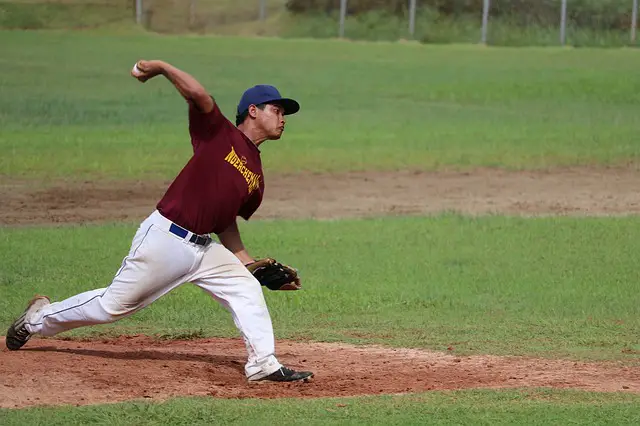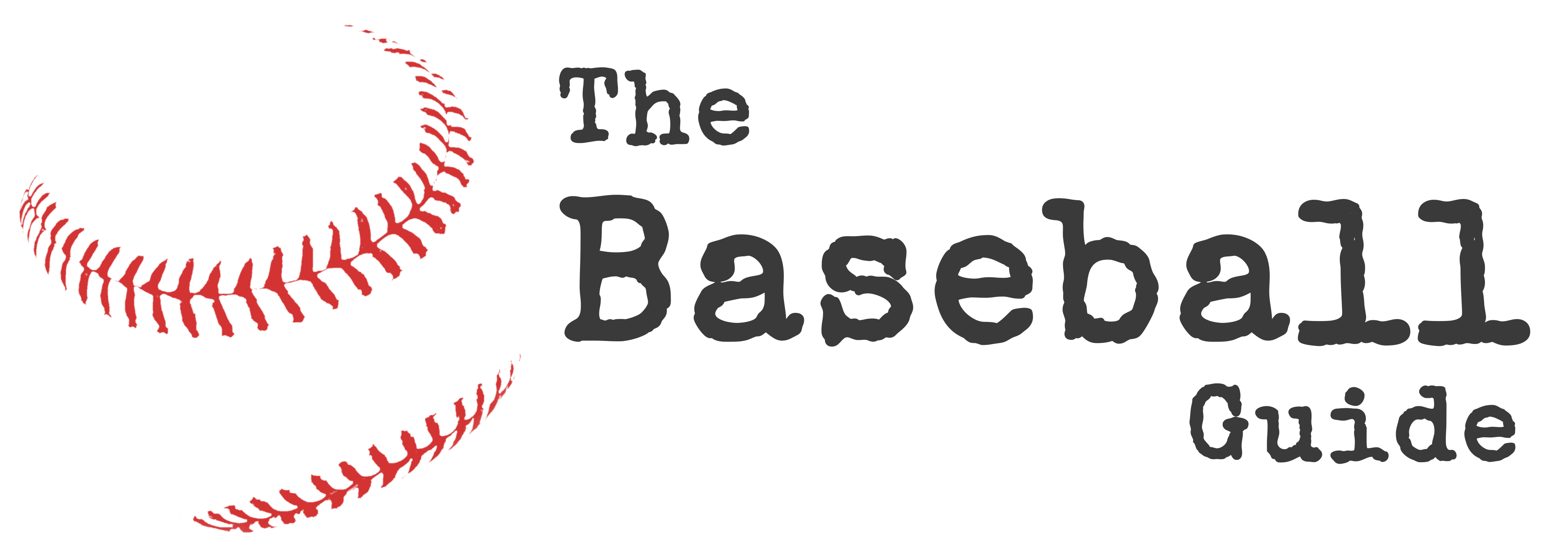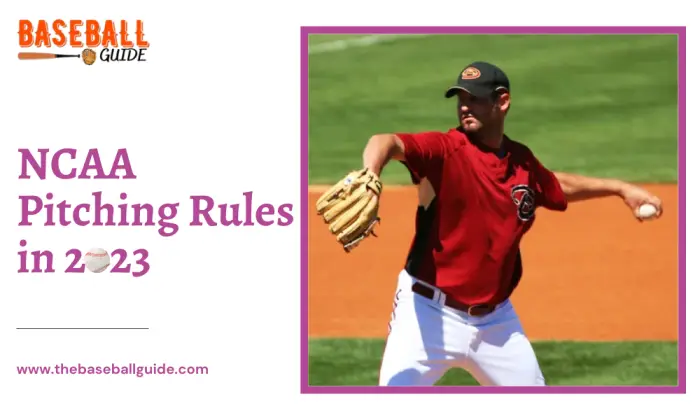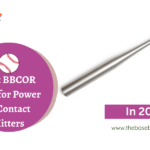This article aims at giving a fair idea of the rules of pitching in baseball.
As the 2023 NCAA baseball season approaches, players and fans need to stay up-to-date on the latest NCAA pitching rules.
These rules not only impact the game’s pace and strategy but also the safety and well-being of the players.
In this article, we’ll discuss all the updated NCAA pitching rules for the 2023 season.
This article gives you a basic idea of where the rules of pitching apply and how they work for different pitching situations.
Where Do These NCAA Pitching Rules Apply?
These new NCAA pitching rules will apply to all NCAA baseball games during the 2023 season. This includes all regular season and postseason games. All NCAA member schools and conferences will be required to comply with these new rules, and any violations could result in penalties and sanctions.
It’s important to note that these rules only apply to NCAA baseball games, and not to other levels of baseball or other sports. While other leagues and organizations may have similar rules and regulations, the NCAA rules are specific to NCAA baseball.
Players, coaches, and fans should be aware of these new rules and how they will impact the game. It’s also important to follow all other NCAA rules and regulations to ensure fair play and the safety of all players.

Understanding the Importance of Following NCAA Baseball Pitching Rules
While it may seem like these new NCAA pitching rules are just minor adjustments to the game, they serve an important purpose in maintaining the safety and fairness of the sport.
By enforcing rules around pitch clocks, mound visits, and other aspects of the game, the NCAA is helping to ensure that pitchers are not overworked and that all teams have a fair chance to compete.
It’s important for players, coaches, and fans to understand the reasoning behind these rules and to take them seriously. By following the rules and regulations set forth by the NCAA, everyone can enjoy a safe and fair game of baseball.
So let’s all do our part in upholding these rules and making the 2023 NCAA baseball season a success!
NCAA Baseball Pitching Rules of 2023
Pitch Count Limits
In 2023, the NCAA introduced new pitch count limits for college baseball games. Pitch count limits have been used in high school and youth baseball for several years, but this is the first time they’ll be implemented in college baseball. The new pitch count limits are intended to reduce the risk of player injury and promote player safety.
During the regular season, pitchers will be limited to throwing no more than 115 pitches per game. During the postseason, the pitch count limit will be reduced to 110 pitches per game. Coaches will be responsible for monitoring the pitch count of their pitchers and making substitutions as necessary.
Pitching Restrictions
In addition to the new pitch count limits, the NCAA has also introduced new pitching restrictions. In 2023, pitchers will be subject to new restrictions on pitching substitutions and visits to the mound.
During a game, a coach will be allowed to make just three trips to the mound per pitcher. After the third visit, the pitcher must be removed from the game. Furthermore, a coach cannot make a pitching substitution until the current pitcher has faced at least three batters or completed an inning.
These new restrictions are intended to reduce the length of games and promote a faster pace of play. Coaches will need to adjust their game strategies accordingly.
Balk Rule
The NCAA has also updated the balk rule for the 2023 season. A balk is when a pitcher makes an illegal movement or motion while on the mound, resulting in a dead ball and advancing the baserunner.
In 2023, the NCAA will be enforcing the rule more strictly, with umpires given the authority to call a balk if they feel that the pitcher is attempting to deceive the batter or the baserunner.
The updated balk rule is intended to prevent pitchers from gaining an unfair advantage over the batter or the baserunner. It will also promote a fair and level playing field for all teams.
No-Pitch Intentional Walk
In previous seasons, a pitcher would have to throw four balls outside the strike zone to intentionally walk a batter. However, in 2023, the NCAA introduced a new no-pitch intentional walk rule.
Now, instead of throwing four balls, the defensive team’s manager can signal to the umpire that they wish to intentionally walk a batter.
The umpire will then award the batter first base without the pitcher having to throw any pitches. This rule is intended to reduce the length of games and promote a faster pace of play.
Automatic Strike Zone
The use of automatic strike zone technology has been a topic of discussion in recent years. In 2023, the NCAA will be implementing the use of automatic strike zone technology in selected games.
Automatic strike zone technology uses cameras and computer software to track the pitch trajectory and determine whether a pitch is a strike or a ball.
The technology is expected to be more accurate than human umpires, but some purists argue that it removes the human element from the game.
The use of automatic strike zone technology will be limited to a few games during the regular season, and it will not be used in postseason play.
Video Review
Another change for the 2023 NCAA baseball season is the introduction of video reviews for certain calls. Video review will be used to determine if a ball was caught or trapped if a runner was safe or out and if a fair or foul ball was hit.
Each team will be allowed to challenge one call per game. If the call is overturned, the team will retain its challenge.
If the call is upheld, the team will lose its challenge. The use of video review is intended to ensure that umpires make accurate calls and promote a fair and level playing field.
Timing Changes
In addition to the changes to pitching rules, the NCAA has also implemented timing changes for the 2023 baseball season. The goal of these changes is to speed up the pace of the game and reduce the length of games.
Firstly, the amount of time between innings has been reduced from 2 minutes and 5 seconds to 1 minute and 45 seconds. Secondly, the amount of time a pitcher has to deliver the pitch has been reduced from 20 seconds to 15 seconds when no runners are on base. Finally, the time a pitcher has to deliver the pitch when runners are on base has been reduced from 30 seconds to 20 seconds.
These timing changes are expected to have a significant impact on the pace of the game and reduce the amount of downtime between innings and pitches.
Equipment Rules
The NCAA has also updated its equipment rules for the 2023 baseball season. One of the most significant changes is that all catchers must wear a helmet that meets NOCSAE standards. This change is intended to improve player safety and reduce the risk of head injuries.
Additionally, starting in the 2023 season, all bats used in NCAA baseball games must have the USA Baseball logo.
Bats with the BBCOR certification will still be allowed for the 2023 season, but starting in 2024, only bats with the USA Baseball logo will be permitted.
These equipment rules are designed to ensure that players have access to safe and reliable equipment during games.
Final words

In summary, the 2023 NCAA baseball season will bring several changes to the rules governing pitching, timing, and equipment.
These changes are intended to promote player safety, improve the pace of the game, and ensure fair play.
Coaches, players, and fans should take the time to familiarize themselves with these new rules before the start of the season.
Check out our other articles- How to Choose Baseball Bat for Kids, Best Baseball Gloves in 2023.



